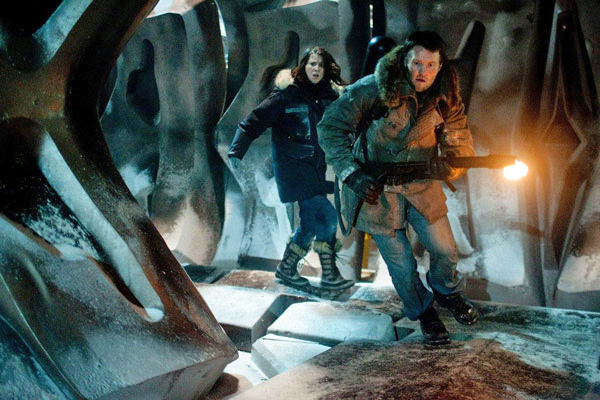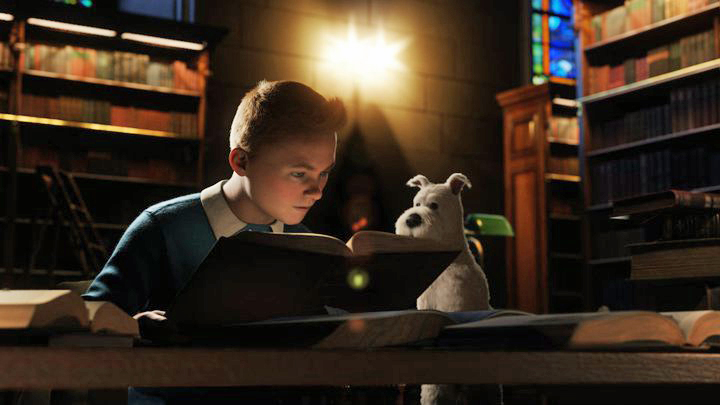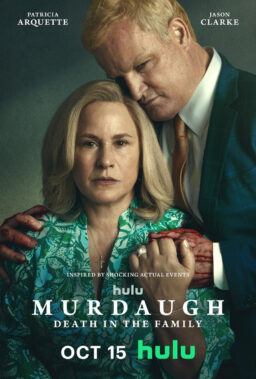Q: How would you compare Scorsese’s “Shine a Light” to “No Direction Home,” the brilliant documentary Scorsese made about Bob Dylan a couple years ago? I am a huge Dylan fan, never been a big Stones fan. Can I appreciate “Shine a Light” without being a Stones fan?
Steve Janowski, Niles
A. Sure you can. One is a biographical documentary, the other a concert documentary, both true to their genres.
Q. Years ago, the technology became available to colorize black & white films. I only saw one, a 1940s “Topper” comedy. I was quite impressed with how well this movie was transformed into vivid color. But shortly after this, the colorization process came to a screeching halt. I recall reading about the outrage of movie purists who considered colorization an assault on the historical integrity of older B&W films.
I have two responses to those who have succeeded in prohibiting everyone else from enjoying colorized B&W films. My question is under what legal basis has a certain group been able to deprive the rest of us from enjoying colorized movies? I wouldn’t wish to deprive those who insist on watching old films in gray tones. But why can’t we have a choice? Colorization would surely breathe new life into many older, wonderful movies.
Matthew Alexander, Ridgecrest, Calif.
A. The abomination of colorization is not against the law. The marketplace rejected it, and Ted Turner ended up with a warehouse full of colorized “Casablanca” videotapes to prove it.
Q. In your review of the latest “Casino Royale,” you wrote: “And this time, no Monte Carlo, but Montenegro … That gives me another opportunity to display my expertise of the Czech Republic.” Why would you bring up the Czech Republic, when Montenegro was a former republic of Yugoslavia?
John C. Lind, Jacksonville, Fla.
A. It’s not my fault they renamed Karlovy Vary as “Montenegro” in the movie, but that is certainly the Grand Hotel Pupp, in the famous Czech spa.
Q. I just watched “Casablanca” again (with your commentary track) for the zillionth time and was struck at how much a viewer needs to know to appreciate the film: Vichy France, French Morocco, the Gestapo, general geography, German invasion of Paris, Spanish Civil War, etc. Is it just me, or are there fewer movies currently that expect the viewer to know either classical literature; current, recent or even “famous” history and just generally that information that comprises cultural literacy? I have watched “Casablanca” with people in their late teens and 20s and had to explain every other scene to them (“If he gets a word in edgewise, it’ll be a major Italian victory!”).
Weltha Wood, Tulsa, Okla.
A. Everyone would have known that stuff at the time of the movie’s release, but you’re right that a lot of recent movies exist in a vacuum of literacy of any kind. And memories fade. See the next letter.
Q. I think “No Country for Old Men” is an incredible film. However, there are three things that bother me from an anachronistic standpoint. The film is most clearly set in 1980 as evidenced by the 1958 quarter that “traveled 22 years” as well as the date on Carla Jean’s mother’s tombstone.
The first potentially out-of-date reference occurs in the gas station when the attendant charges Anton 69 cents for a little bag of nuts (pricey for 1980, no?). The second is when Carla Jean mentions working for Wal-Mart. Granted, there were Wal-Mart stores in Texas in 1980 but doubtful in a town in West Texas. The last is Carson Well’s reference to an “ATM” to pay off Chigurh. ATMs were around then for sure but not nearly as popular as today nor part of the lexicon of the late ’70s/early ’80s.
I guess my question to you is: Do apparent flaws such as these take away from a film’s standing, in your opinion? Can a film expert such as yourself ignore little issues like that when contemplating a film’s quality? If so, how?
Chris Ortman, Cleveland
A. They usually fly right by me, but in any 1950s movie, I’m looking like a hawk for Studebakers.
Q. Others have observed that binoculars in movies provide a view in the shape of two slightly overlapping circles that fill the screen better than the view through real-life binoculars, which is a single circular three-dimensional view. In “No Country for Old Men,” Llewellyn Moss has binoculars that provide a full-frame rectangular view. In all cases, the view through binoculars in movies is rock-steady, even though in real life, it is impossible to hold binoculars to get such a steady view and the more the magnifying power of the binoculars, the shakier the image.
Roy Maltby, Calgary, Alberta
A. True. But did it bother you? I was too busy looking. Sometimes you have to go with the flow.
Q. Someone asked you if it was difficult to review bad movies and your reply was that it was most difficult to review spoof movies. I wanted your take on movies that are bad but are supposed to be. Is it OK to love: “Sorority House Massacre 2,” “Night of the Lepus” and “Basket Case”? Do these types of movies rake your nerves or do you appreciate them as well because, hey, as a fan of film in general, it’s cool they were made at all?
Luke Meighan, Lexington, Ky.
A. Having not seen any of them at all, I reply that all depends on whether they are made with style, wit and have a clue about what they want to do.
Q. I got one of these new flat-panel widescreen TVs. There is an easily accessible control that lets me switch it from widescreen to 4:3 easily, and even an “automatic” setting which does a pretty good job of seeing what the correct format is supposed to be — when I’m looking at signal coming in from cable, for example. But when I’m watching DVDs, the high-definition connection always assumes that it’s widescreen, and will not allow a change to 4:3. So slip in a disc of, say, Astaire and Rogers in “Swing Time,” and you will see all the image with nothing cut off either the top or the bottom, but Fred and Ginger will be lots shorter and fatter than they ever were. This is, of course, much more noticeable with Fred.
Hank Graham, Seattle
A. Entirely unacceptable. Demand a refund. Raise a stink.
Q. I have to put this rumor to rest properly. Not only is “The Wizard of Oz” figure not a munchkin, it’s not even a human, and its presence isn’t a mistake. It’s a giant bird, one of several that were put on the set for atmosphere. If you watch the film on DVD, you can very clearly see it spread its wings.
Raymond Ogilvie, Pottstown, Pa.
A. This officially closes discussion of whether there is a “suicide” in “Wizard.”
Q. News comes today that Francis Ford Coppola has cast your old nemesis, Vincent Gallo (of “The Brown Bunny“) as the title character in his upcoming film “Tetro.” What do you make of this, if anything at all. Has Coppola lost his mind?
Andres Baca, Miami
A. Vincent Gallo is a gifted actor.












